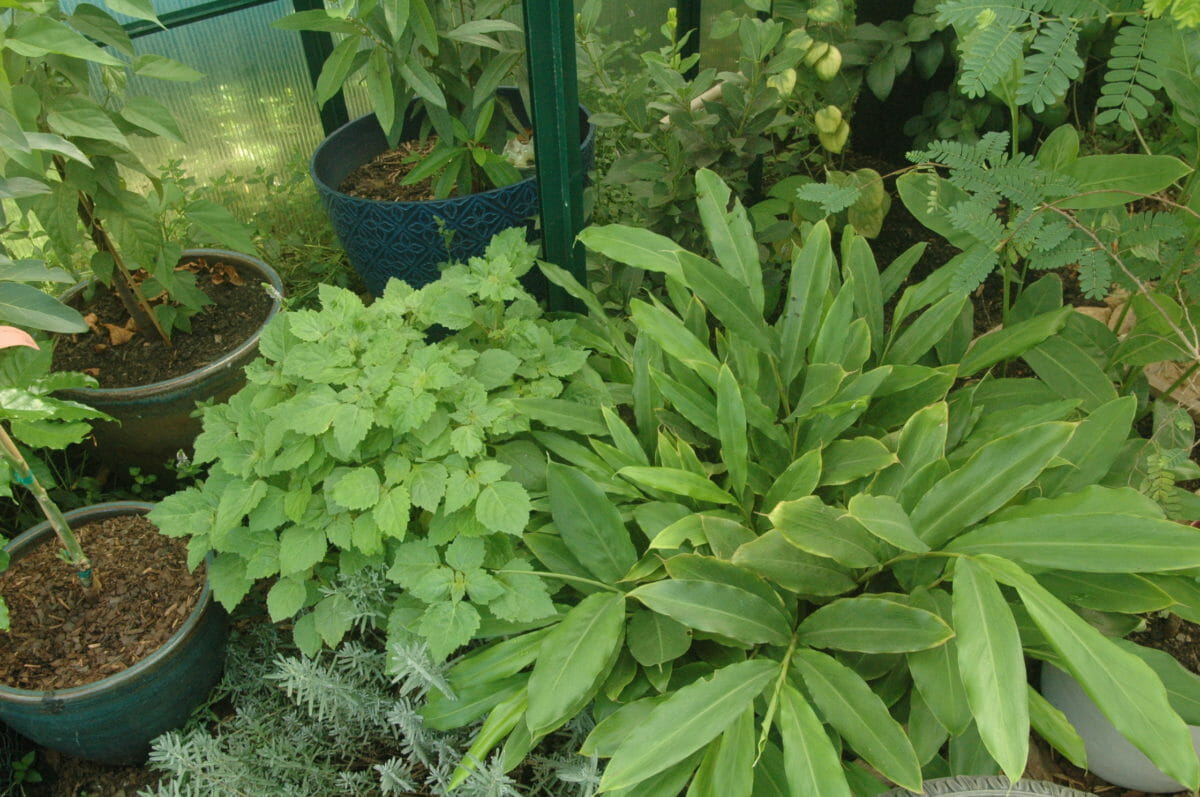Tasha Greer has some tips for you.

Many gardeners tend small herb gardens on their window sills, but far fewer take the next step to grow their own spices.
Spice-grower and author Tasha Greer wants gardeners to know that while it takes a bit more technique to grow spices, it’s still something anyone can do. Greer wants to walk gardeners through the steps with her new book, Grow Your Own Spices, which she put together with collaborators, Lindsey Feldpausch and Greta Moore.
Greer spoke to Modern Farmer about her new book, what gardeners can do during the winter to prepare their spice gardens and whether she thinks the gardening comeback we’ve seen during the pandemic is here to stay.
The following interview is edited and condensed for clarity.

Tasha Greer says growing spices takes some technique and know-how, but no special equipment. Photo by Tim Miles
Modern Farmer: Why should people grow their own spices?
Tasha Greer: I think people should start growing their spices because you have to learn so many different garden skills to be able to get to a harvest. A lot of people start with herbs because you get quick results, but if you get into spices, you have to grow them all the way through until they seed, or pick the flowers at the perfect point. And if you’re growing underground parts, they need to be timed with increasing and decreasing daylight hours and soil temperatures. It’s those factors that cause these plants to start storing nutrients in their underground stems. So when you grow spices, you get to understand the full cycle and spectrum of a plant’s life and that translates into any aspect of gardening.
MF: We’re getting into the dead of winter. Many people are stuck in their homes due to the pandemic with little to do. What are the things people can do now to prepare to grow spices in their yard in the spring?
TG: That’s a great time to order plants and seeds because it’s kind of hard to find these things. Some plants won’t be delivered until warmer conditions, but by then it might be too late to order them as sellers might be sold out. If people can get in their spice seed orders early, they’ll be sure to have them for spring. But there are also a bunch of spices you can grow indoors entirely. Any point after the winter equinox is a good time to start them, as you’ll have increasing light in your south facing windows.
MF: It seems like there has been quite a resurgence in the popularity of gardening during the pandemic. Do you think that’s here to stay, or do you think people will abandon it once the pandemic is over?
TG: I think the momentum has been building on gardening for a long time. We went through a period when everyone wanted lawns and shrubs because they were so busy with other activities. I think people are getting tired of that kind of gardening and are coming back to wanting to have plants that need a bit more care and provide more nourishment. I think there will be some that might drop out of the gardening world, but a lot of people have gotten the gardening bug and are now forming relationships with their plants and soil. They’re not going to let go of that lightly.
I also think a lot of people seem to enjoy working at home. And when you’re at home, you can’t sit at your desk all day without the usual interruptions that you’re used to from co-workers walking up. So it’s like your garden becomes your interruption.
MF: Many people grow small herb gardens on their window sills or in their backyards. What’s the difference between herbs and spices?
TG: For me, when I’m cooking, I don’t draw much distinction. I usually think of herbs as the stuff that’s soft and cooks up easily, and I think of spices as things I have to do a bit more processing to. But when I’m talking about it from a gardening perspective, I really draw the distinction at plant maturity. With herbs, you’re always harvesting tender greens and with spices, you’re harvesting the plant parts that don’t develop until the plant has achieved sexual maturity. The thing that really distinguishes them is how long you have to grow them. It just takes a little bit more skill and know-how to grow spices.

Tasha Greer’s greenhouse is taken up mostly by spices. Photo courtesy of Tasha Greer.
MF: How difficult are the processing techniques for spices? And do gardeners need special equipment for this processing?
TG: I’m going to give you a homesteader answer to that one. No special equipment should be required to grow and process spices. You should be able to do all of this with things you already have. There is some technique and know-how, but you don’t need any special tools.
MF: What are the general best conditions to grow spices or does it vary greatly?
TG: It really varies. In the book, I’ve broken things down. There are definitely variations in conditions and it’s important to look at each plant individually and figure out how to give that plant what it needs. There are broad categories such as annual seed spices, cold temperature varieties and warmer season stuff. Then Mediterranean spices like drier conditions whereas tropical and subtropical ones need a bit more humidity.
On my desk, I have several things growing together. I have several things growing together: vanilla, a lemon tree, avocado and lemongrass. This is just on my desk in my office. Their light requirements are similar, but their humidity requirements are different. So I address that by using a mister. I’ll mist the vanilla, but I won’t mist the lemon. There are small adjustments you can make to grow Mediterranean with tropical spices together in the same space. You just have to know the plant and think about how to address its needs.
MF: For those that are incredibly lazy gardeners, what are some of the easiest spices to grow?
TG: Lazy gardeners need to spend at least some time up front to set up good procedures so that they can still have success. Lazy gardeners will need some sort of automated gardening system. With something like Vanilla, you could use a watering stake with a bottle on it and keep it comfortable as long as you create some humidity around it. You could plug in a humidifier that you set on a timer. That way, you can be a lazy gardener, not think about these things too much and still get good results. Most plants require regular care. Some can take irregular care, but I think most spices fall into the “regular care” category. You can be lazy, but you’ll have to do some work in advance to set up good procedures.
This was super interesting and inspired me to think beyond herbs in a kitchen garden to spices that I can start inside with some adaptations.
Thank you! Consider me inspired…
Where is she growing these plants, geographically? I don’t have warmth 24/7 so I don’t think I can easily do more tropical plants.
I would love to grow ginger and turmeric, but as root plants, and likely warmth loving as well, how can that be done indoors and in cold climates?